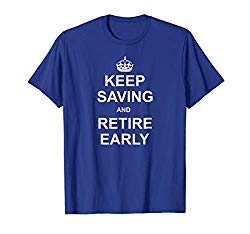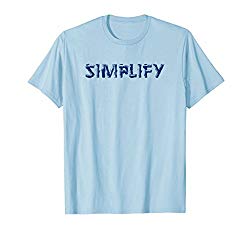A Day In The Life Data Visualization
I have a cool post today to show an awesome data visualization website I stumbled upon. I know, you’re thinking “who stumbles upon data visualization websites?” Me, that who. I’m waving my dork flag high!
Using data from the American Time Use Survey, I found someone who’s managed to show how a typical day flows in America, using real data. I’ve known about these data for a little while but I’ve been trying to find a good use for them. Well these folks knocked it out of the park.
The American Time Use Survey is from 2014 and asked thousands of people what they do during a 24-hour period. We in the financial independence community might find the flow of the average day quite intriguing.
After all, most of us are likely trying to reach FI to take back some of our time. Those who want to be FI but still work full time no doubt still would prefer not being locked into a rigid 9-5 Monday-Friday schedule with no flexibility.
So how much time are people really spending at work? How much time on leisure?
It’s kind of mesmerizing isn’t it?
To me the best part of the “dancing dots” is waiting for the top of each hour and watching bunches of them burst in movement to other categories. It’s obvious the respondents of the survey defaulted to either the top of the hour or halfway through the hour (ex. 5:30) when detailing what they did each day.

At 1:14 In The Morning, Still 5% of People In The “Leisure” Category. Hmmmm….
#IGuessItFitsInTheLeisureCategoryBest #ItCouldAlsoBeMisc
According to Nathan Yau, the guy who made the visualization, this is a “Time-varying Markov Chain”. And you think I’m a dork…
My New Days
I would love to see this beautiful visualization mapped out for myself. Some of you who read my blog might think there would be a cycling and running category with dots gravitating to those for long periods of time.
Sometimes you would be right 🙂
But since I went part time at my main job my “flowing dots” would be very very different. I’m getting more sleep. I sometimes nap in the afternoon now, something I never did before.
A huge benefit of being semi-retired is that I obviously spend more time in leisure than I did before. I also spend more time the in the “housework” category, but that’s a good thing.
I simply didn’t have time for much of my housework before I went part time. Now I clean, dust, and vacuum more often, and I’m okay with that. What!!!?
Yes, I’m okay with more housework. When you crank up the jams and can do it at 10:00am on a Tuesday because you don’t have to work today or tomorrow, it takes much of the sting out of it.
I also like the notion that I’m taking care of my own environment, instead of just paying others to do it for me. I’m not knocking people who do the latter – I definitely understand why so many people hire house cleaners or people to cut their grass. They don’t have time.
Well, I now have time. And to me, there’s something rewarding about doing the work yourself and keeping your home clean with your own power.
I also think you shouldn’t go through life only doing things you fully enjoy. Sometimes you need to do things you don’t like so much – like cutting the grass – so that you can enjoy the other parts of life more.
Periods of discomfort serve to heighten the pleasurable parts of life even more. Or more simply said, that beer that I have after cutting my grass tastes WAY better than a beer after doing nothing at all.
Lots Of Leisure

Time Is The Great Equalizer…
But back to the data visualization. To me, the leisure group stays awfully larger than I would expect it to be for the average American. As an example, check out the distribution of dots between 9:30 and 11:00 a.m.
I dug through the FAQs of the survey data to see the breakdown of the days. Do the data reflect typical M-F weekdays or weekend days? I found this:
The main part of the ATUS interview is the 24-hour time diary. This part of the interview is used to collect a detailed account of the respondent’s activities, starting at 4 a.m. the previous day and ending at 4 a.m. on the interview day. For each activity reported, the interviewer asks how long the activity lasted. For most activities, the interviewer also asks who was in the room or accompanied the respondent during the activity and where the activity took place.
So basically it’s a mix of weekdays and weekends. But being for the average American adult there are five days of the former and two of the latter, I’m still surprised to find so many dots “at leisure” between 9:30 – 11:00 am.
Perhaps some interviewees classified reading personal finance blogs at work as “leisure”. 🙂
I can’t help but wonder what the days of some of the more notable FIRE bloggers who fully separated from work (Root of Good, RetireBy40, or Go Curry Cracker) would look like if they were visualized this way.
I also started thinking about what my visualization will look like once I’m fully retired. Since all of us are normalized by one common thing – we only get 24 hours each day – it’s a great thinking exercise.
You’re turn Financial Warriors – does the flow of the data surprise you? If you could imagine your typical day mapped this way are you happy with the amount of leisure and learning time you have versus the amount of work?











































I love these graphics – it’s amazing what type of story you can tell from data.
And how even though you might think that everyone commutes to work and back from 9-5 – it’s not actually the case.
When I’m out on one of my off days at the store it is better than being there on weekends, but I’m still amazed at the number of people not at work.
What an awesome visual presentation of (what would normally be considered boring) numbers. Data is beautiful!
Thanks!
Very cool visual representation. Unless the respondents were all FIRE people I also thought much more leisure time during day. Probably survey bias as those people who don’t have leisure time at all wouldn’t have time to find survey to answer it.
I agree about how doing things yourself makes you appreciate things more. I mow the lawn myself and love the way it looks after knowing I did it
Good point, those who have spare time for surveys are living a more leisurely life. Now go do that lawn!!
Such an interesting visualization. Although I am considered fully employed, I’ve found ways to amp up the leisure time. Between 930-1130 most days I try to read, exercise, and write.
Keep amping Doc!
The visual is really neat. It’s interesting to see the dots migrate from sleep to work to leisure.
For me, reading personal finance blog is now in the work category. When I stop blogging, it will be back in leisure category again. 🙂
Ha, I love the notion of reading blogs as “work”. Things could be worse!
This is super cool! Thank you for sharing. To answer your questions, the flow of data does surprise me a little bit in that I thought there would be MORE work going on, but I guess I shouldn’t be surprised. When I worked in an office several of the hours would be filed under “team building” AKA talking to coworkers, not actual work.
If I were to map my current work day I wouldn’t be happy with the amount of leisure time. I’m not. Hence the path to FIRE 🙂 . Thanks so much again for sharing.
Agreed, people need to get back to work 🙂 Glad you enjoyed it!
i think i have plenty of all time in a good balance. that’s a good place to be. i wonder where social fits? leisure? the only thing i would change would be more social time, but not with just anyone.
i would think social is under leisure. i probably need to up my social time but all my closest friends work 50 hours a week!
Okay, now I want to do this for my own “typical” day. Sleeping definitely takes up 7-9 hours every single day 🙂
Well then you’re winning the sleeping game for sure!
Right after this I had two back to back days short of 7 hours and needed a loooong nap to make up for it haha
Interesting how technology has can enable us to see such a huge, multi-dimensional set of data in a way that naturally fits into our brain. I see “visual display of information” being a skill set that grows in demand as our ability to acquire and store information grows.
It’s a skillset that’s already in HUGE demand, part of what’s commonly called “data scientist”
Thank you so much for sharing this visualisation! It’s so mesmerising. And also inspirational, in a way. I loved seeing how many people were sleeping at certain times, and I was so amazed that people start going to bed at 8-9PM. I’ve always wanted to do that, but instead find myself up at 1.14AM, still in the “Leisure” category. Gotta start doing something about that!
Lately I’ve been making an effort to go to bed earlier and it’s working. I’m sleeping more and feel better in general!
Wow that really was mesmerizing! One thing I found interesting was how during the waking hours if you looked at the middle grey dots for Traveling, there were always at least 5% of people traveling at any given moment. Really crazy to think about that traveling can take up so much time. I’ve gotten used to it from my long commutes, but even now that I’m walking more to work I still find it takes a decent amount of time (since it’s a little over two miles away)
Yep, people are always moving. And our car culture encourages more of it than probably necessary. It would be super interesting to see this visualization for those who solely car-commute
Before I even knew about this time survey, I had been keeping a time diary for myself — what I’m doing by half hour increments and then I would attach these to a “client” (e.g., household, family, finances, career, etc). I started doing it b/c my first job was in professional services and I kept billing logs for work, so I thought a billing log for my personal time would be a great way to track where my “free” time goes. I’ve been doing it for over 20 years now, and it’s really useful to stay accountable to your time and to be real about what you’re doing and why, especially when I started working for myself 10 years ago. When I need to focus on a particular goal (e.g., kick up sales) I can more finely track the time spent around career and break out the actual sales time versus other things. Time tracking has been really useful, especially over the years where I can see personal patterns.
Wow, that’s amazing that you’ve been doing this for so long. You should contact the data guy and see if he can use your data to do a visualization!
That was a lot of fun to watch. I couldn’t help seeing the image of “sheep” in my head instead of balls moving across the board. There does seem to be some very large and pronounced societal habits. I don’t mean to call people sheep as we are all doing our best to enjoy life, take care of our families, etc. but society has definitely created a framework for us to live and work in.
I am a bit of a contrarian so this just motivated me to keep pushing forward towards my goals of breaking this norm!
Norms are meant to be broken. Plus we can use this data to maybe find out when the gym or grocery store aren’t as crowded 😉
+1 on the gym!